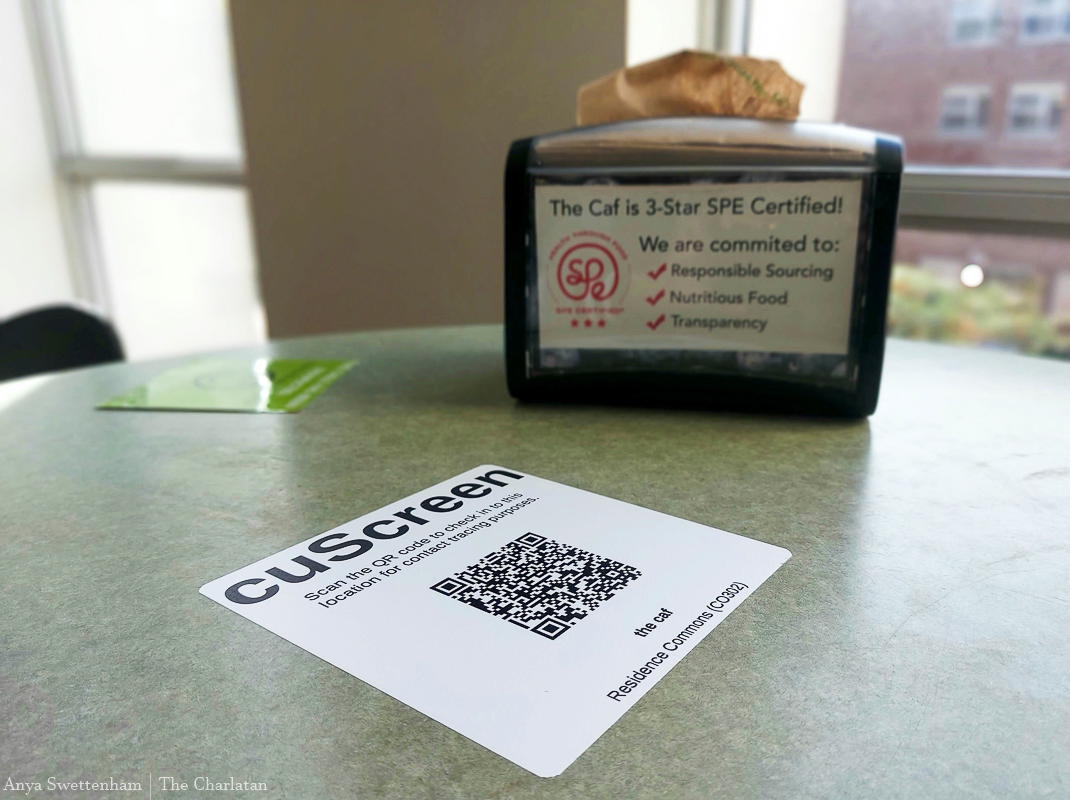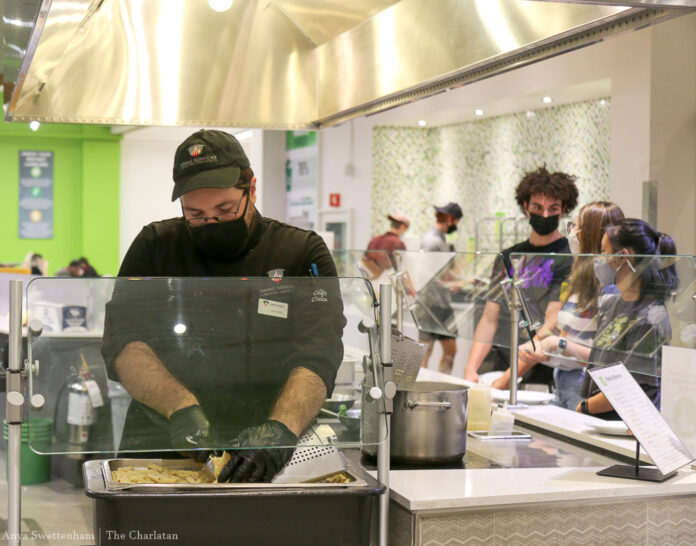Residence students who pay for meal plans offered by The Caf should be allowed to take food to-go.
The Caf prides itself on its three-star SPE certification, providing nutritious meals to students and a certified zero-waste cafeteria.
While The Caf boasts healthy food, eco-friendly practices and service with a smile, the ability for students to take their leftovers to-go is the last part of the puzzle necessary to fully support students.
Meal plans are expensive and students should have access to the food they pay for around-the-clock. Restricting students’ access to food to one location on campus hinders the success of those with packed schedules that coincide with traditional meal times, medical conditions that require reliable access to food (such as diabetes) and students who don’t feel comfortable eating in the cafeteria due to COVID-19 concerns.
With residence fees thousands of dollars more expensive than fees for the same services at other universities, students who chose to live on campus at Carleton and pay upwards of $10,000 for their housing and food should have the option to take meals to go.
Housing does not publish the revenue it generates from meal plans, nor did the department respond to requests for this information. However, with money from about 3,000 students living in residence, students should have the option to take more than a single piece of fruit to go.
While meal plans are all-you-can-eat, dining hours are from 7:30 a.m. to 10:00 p.m. Students with busy schedules who have multiple classes throughout the day are often left with little to no food to eat by the time they enter The Caf. Buffets, sandwich and pasta bar start closing around 9:00 p.m.
Furthermore, students who need reliable access to food to maintain their health are severely restricted as their access is complicated. Students with medical conditions like diabetes or hypoglycemia are at risk by not having readily available snacks for their blood sugar levels. Similarly, students with Crohn’s Disease or irritable bowel syndrome may trigger symptoms if they eat large amounts in one sitting.
Similarly, students with eating disorders may find it difficult to eat in large crowded areas or feel overwhelmed. Not having the flexibility to take meals to go or feeling the pressure to binge eat when students do have time to spend at The Caf defeats the purpose of mindful eating Carleton has advocated for in the past.
Lastly, even though The Caf has put COVID-19 safety protocols in place, relying on university students to abide by the honour system of COVID-19 safety protocols does not work. It is all hygiene theatre.

An easy solution would be allowing students to bring their Tupperware to The Caf. Cafeteria staff have stopped students from doing this in the past, referencing worries over liability for students who consume expired food and planning the amount of food The Caf needs to prepare.
While this argument sounds logical, it fails when someone considers The Caf’s boxed meal plan or takeout system during lockdowns in 2020. A student could still get food poisoning either way, either by smuggling food out in a Tupperware container or from The Caf’s boxed meals to go.
The boxed meal plan may seem beneficial for students with complicated schedules but requiring orders to be placed 48 hours in advance requires foresight that students may not have considering their changing schedules.
Not only this, but boxed meal options are limited. Eating the same sandwich and granola bar every day provided in the box lunch does not compare to the myriad options available at The Caf.
Going forward, The Caf could allow students to take sandwiches from the subway-style sandwich bar to go since they are already served on a piece of parchment paper, or allow students to grab a slice of pizza when in a hurry. The two meals are mess-free and easy for The Caf to serve on the go.
Residence meal plans are expensive and The Caf does not meet the growing demand for alternative options for to-go meals that fit students’ busy schedules and health needs.
It is now time for The Caf to modernize its defunct policies and supply the last piece of the puzzle to fully support students.
Featured image by Anya Swettenham.






